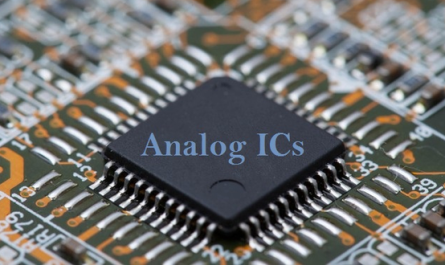Improving Operational Efficiency with Real-time Data Analytics
However, with the evolution of Internet of Things (IoT) technologies, real-time monitoring of assets has become possible. Digital oilfield solutions leverage sensors, edge computing, and cloud platforms to continuously gather and analyze operational data from drilling rigs, pipelines, and production facilities. This provides insights into equipment performance, production levels, and other key parameters. For example, preventing downtime through predictive maintenance. Oil companies can now detect anomalies and failures before they impact operations. Real-time analytics also help optimize processes like reservoir management through remote monitoring of injection and production rates.
Streamlining Workflows with Automation and Robotics
One of the major applications of digital technologies in oilfields is automating routine and hazardous tasks. Robots are increasingly used for activities like inspections of oil tanks and pipelines that require entering confined spaces. Digital Oilfield Drones fitted with sensors and cameras can survey rig equipment and infrastructure for defects instead of relying on manual checks. Robotics also assist with well intervention jobs like cleaning tubes and replacing parts without exposing workers to risks. Automating mundane workflows through machine learning algorithms helps reduce costs and improve safety. It allows redeploying personnel to more critical functions. Some companies are even experimenting with driverless trucks and robotic pipe handlers at production sites.
Boosting Drilling Performance with Simulation and Modeling
Digital tools play a vital role in planning and executing drilling operations efficiently. 3D reservoir modeling using subsurface data helps engineers better understand the underground formation. It provides insight into locating sweet spots and avoiding natural hazards. Drilling simulations done before spudding a well help anticipate issues and test solutions virtually. Directional drilling algorithms guide rig crews in steering wells as planned based on downhole measurements in real-time. Automated drilling advisors monitor multiple parameters and provide recommendations. Digital twins of rig equipment and downhole tools enable testing new designs virtually before physical implementation. This reduces engineering cycles and failure costs from experimental drilling. Overall, digital technologies are transforming drilling from an experiential process to a model-driven one.
Enhancing Collaboration Across Asset Lifecycle
Managing oil and gas assets spanning exploration, development and production requires integrating efforts across engineering, procurement, construction, and operations. Digital oilfields facilitate greater collaboration using centralized platforms and workflows. Field development planning is now a collaborative process bringing together reservoir, drilling, and production engineers on a common digital environment. Integrated project workflows ensure all stakeholders have access to the latest engineering designs, contracts, and documentation digitally. Digital commissioning of new facilities captures vendor handover documents and maintenance manuals centrally. This improves accountability, handovers, and knowledge transfer throughout the asset lifecycle. Remote operations centers enable real-time oversight and decision making by bringing dispersed experts onto a common operating picture digitally.
Optimizing Supply Chain Management with Blockchain
Oilfield service supply chains have traditionally relied on paperwork flowing between operators, contractors, and logistics providers leading to inefficiencies. Blockchain, a distributed ledger technology, provides a shared platform for tracking physical assets and digital transactions in real-time. It securely captures data at each point like equipment delivery, job completion, and vendor payments eliminating discrepancies. Smart contracts automate transaction approvals based on pre-defined terms. This brings more transparency to bidding, procurement, and invoicing processes. Blockchain networks can also track certifications and maintenance histories of critical tools throughout their lifecycle improving quality control. The technology has the potential to streamline supply chain operations, optimize inventory management while reducing maverick spending in the industry.
Improving Project Economics with Integrated Planning
Maximizing asset value and return on investments requires optimizing development capital efficiently across the asset portfolio. Digital oilfields adopt an integrated approach to reservoir management, field operations, and project management. Dynamics models incorporate subsurface uncertainties, production forecasts, capital schedules, operational costs to assess development scenarios. Interactive planning dashboards provide engineers and managers visibility into project economics under changing assumptions in real-time. This enables evaluating trade-offs between infill drilling, enhanced oil recovery techniques or reservoir extensions. Machine learning algorithms also optimize well placement and complete reservoir exploitation over the long-term. Digital planning and execution ultimately boost recovery factors while fast-tracking return on investments.
Overcoming Barriers to Digital Transformation
While digital technologies offer immense promise to revolutionize oilfield operations, their adoption also faces challenges. Integrating legacy systems developed over decades into new architecture requires time and capital investments. Data quality, availability, and standards continue to be an industry-wide issue limiting insights. Developing specialized digital skills and expertise also remains a constraint that drives offshore outsourcing and partnerships with technology firms. Cybersecurity risks from increasing connectivity of critical equipment needs strong policies and controls. Changing organizational culture and mindsets remains one of the biggest barriers to maximizing ROI from digital initiatives. Overall, an optimized blend of operational needs, enabling technologies, skills, and change management will determine the pace of digital transformation in the hydrocarbons sector.
The digital oilfield concept leverages the convergence of various emerging technologies to disrupt traditional ways of working in exploration and production. The paradigm shift from dispersed functional silos to integrated virtual environments for planning, execution and real-time monitoring will be key to improving project economics. While challenges remain, oil companies that strategically invest in data governance, standardized systems, workforce capabilities and collaborative innovation models will lead industry’s digital evolution. This will underpin the next wave of productivity gains and optimization of hydrocarbon reserves over the coming decade.
*Note:
1.Source: Coherent Market Insights, Public sources, Desk research
2.We have leveraged AI tools to mine information and compile it




